Sculptures of over 100-year old wood from the Reykjavík Harbour / Gift from the Icelandic Nation and other supporters around the world to the Football Association of Iceland.
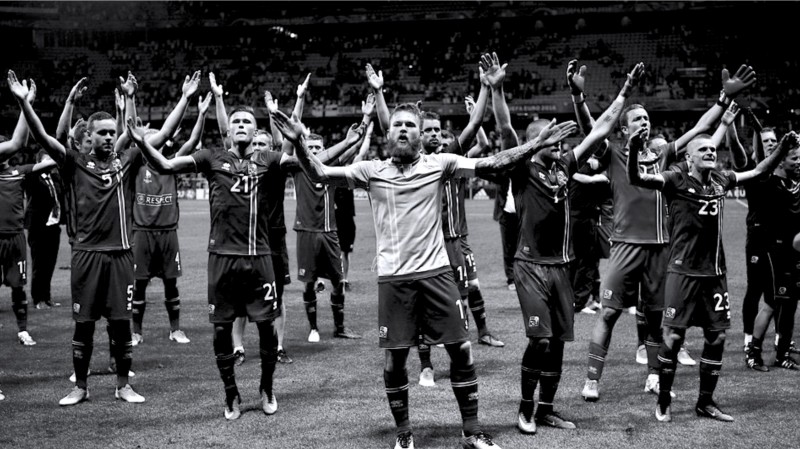
The sculptures will imitate all our heroes and have them as accurate as possible in the posture when the team takes the Epic Vikings Slow Hand Clap. Here is history, culture and sports combined together in one form. The chairman and board of the the Football Association of Iceland has considered their interest in the project and believes that the artwork "The Epic Vikings Slow Hand Clap" will draw a lot of attention to its creation and capture well-known moments in the nation sports history. It is planned to set up all the sculptures in one art piece outside the main stadium in Reykjavik with an inscribed gift shield about the sponsors its supporters. The artwork can attract a large number of tourists and residents. The Football Association of Iceland may well be able to finance such work with other interested parties and supporters.
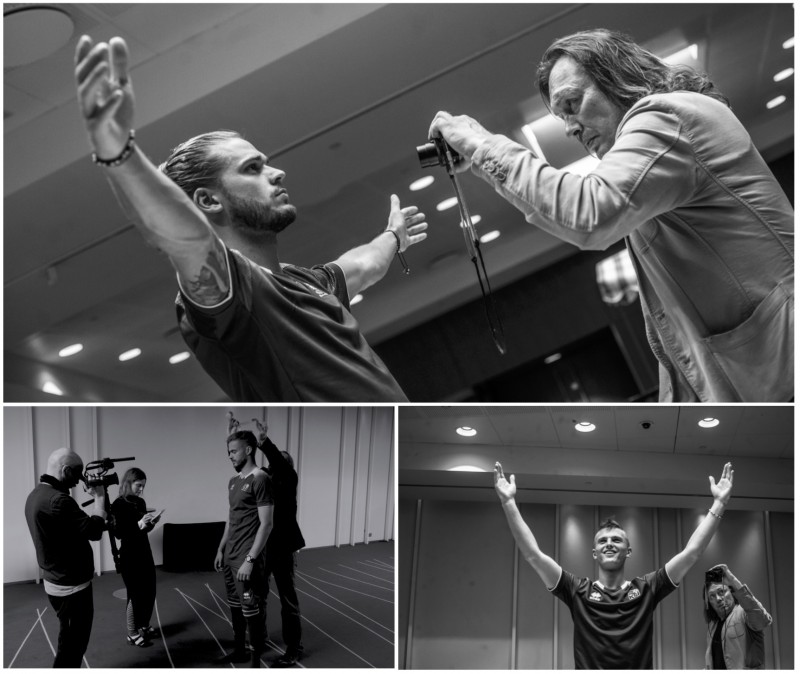
First are photographs taken of each and every one of the team in a whole circle and every single item will be covered for the best result of the carving. The position of each member is when the team is taking the Epic Vikings Slow Hand Clap looking up in a good mood for its audience. Each member will be measured to get as the true replica of the sculptures. These photographs would be used for the creation of the sculptures.
Dried wood planks from Reykjavik Harbour will be glued together into one block until more than whole formable body size of each national team member will be achieved. Every wood block will be sawn down with multi-saws. An exact replica of the relevant national team member will be made after the photographs with carving tools.
Each sculpture will be carved in detail and polished to match each player. All the finalising work will be done manually to accomplish the artist characteristics texture and style. The sculptures will be varnished with oil 5 times to achieve good texture. It is scheduled to have the sculptures created and constructed in 8 -10 months at UAB / STUDIJA VILNIUS in Lithuania with artists and team.
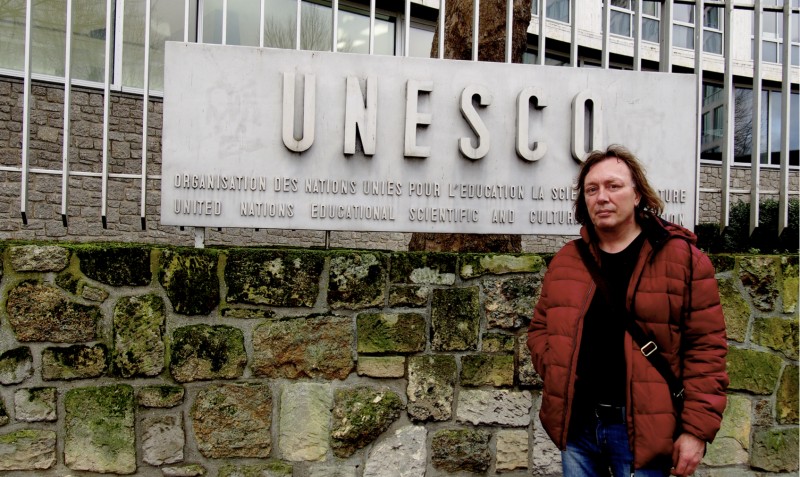
It is scheduled that the artwork will be one of the art pieces for History and Art exhibition that will be organized at the Headquarters of UNESCO in Paris in collaboration with The Equator Memorial Project.
The project is a group of international artists who are creating art pieces and functional objects by recycling historical materials of ruins from world heritage sites.
Prints of informational posters about the history of Reykjavik Harbour and the Iceland national football team will be a part of a set design where the artwork will be at the exhibition. Brochures about the exhibition and a book of collection with interpretive texts on all the art pieces and creation of the project will be published.
When the exhibition is finished the sculptures will be transported to Reykjavík, where they will be arranged as one complete piece for the outside of the main stadium in Reykjavík in collaboration with the Football Association of Iceland with a special open ceremony with the team, supporters and partners.
The Iceland national football team goes into the full-length documentary about the Equator Memorial Project, where a chapter on the working process for the creation of sculptures of the Epic Vikings Slow Hand Clap could be found.
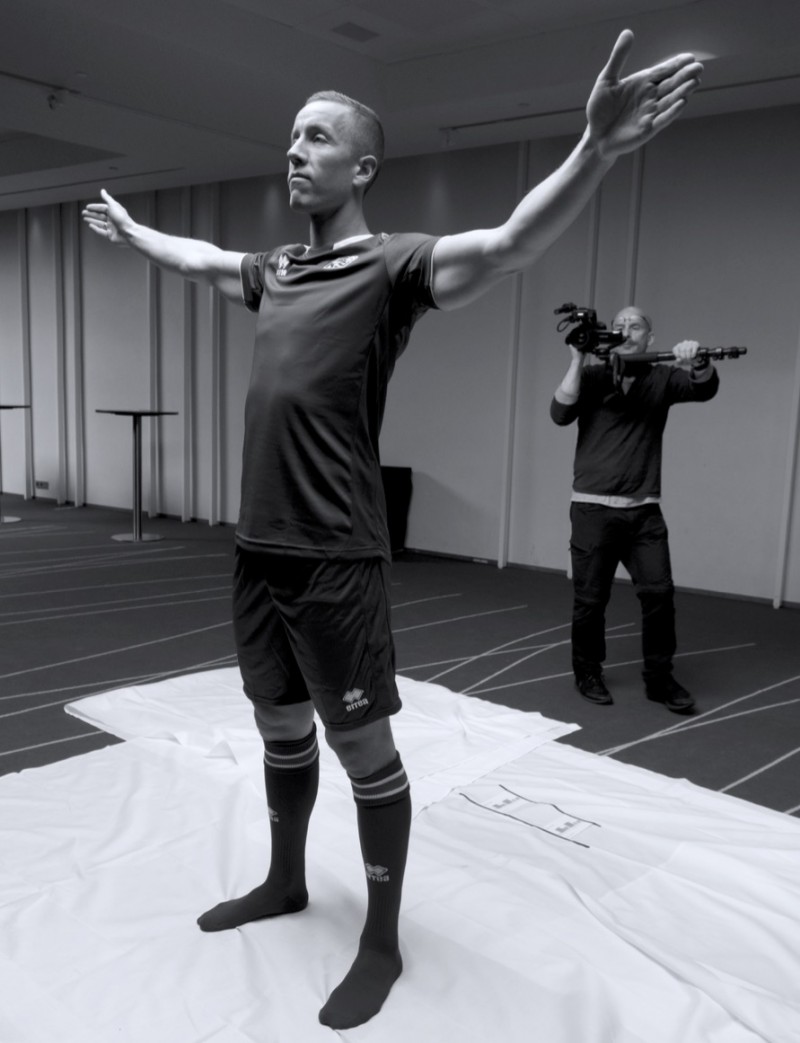
Hannes Þór Halldórsson, goalkeeper, Iceland National Football Team and Jón Karl Helgason, filmmaker on set of photo-shootings preparation for the art work "Epic Vikings Slow Hand Clap".
In May 2012, Sigmarsson was watching a report on the evening news about the Association of Icelandic Ports and its intention to refurbish the Reykjavík Harbour. Apparently, much of the jetty was to be removed and discarded. It occurred to him then that the wood might be recycled and used to make functional objects and art pieces. And this was the beginning of a brand new idea.
In autumn, a group headed by Sigmarsson obtained permission to take the wood being thrown away by the Reykjavík Harbour. Aside from being environmentally friendly, this recycling was also a kind of resurrection. Way back in 1903, the very same material was used to construct a dock for the herring fleet, which later became a part of the Reykjavik Harbour that was constructed between 1913 and 1917. Closer examination revealed that some of the wood originally came from a German schooner that sank off the south coast of Iceland in 1890. The vessel was brought to Reykjavik and disassembled for scrap. Fascinatingly, research indicated that that the trees may have been more than 200 years old when they were first used for shipbuilding. The Romans commonly used similar and other conifer wood to build many of their houses.
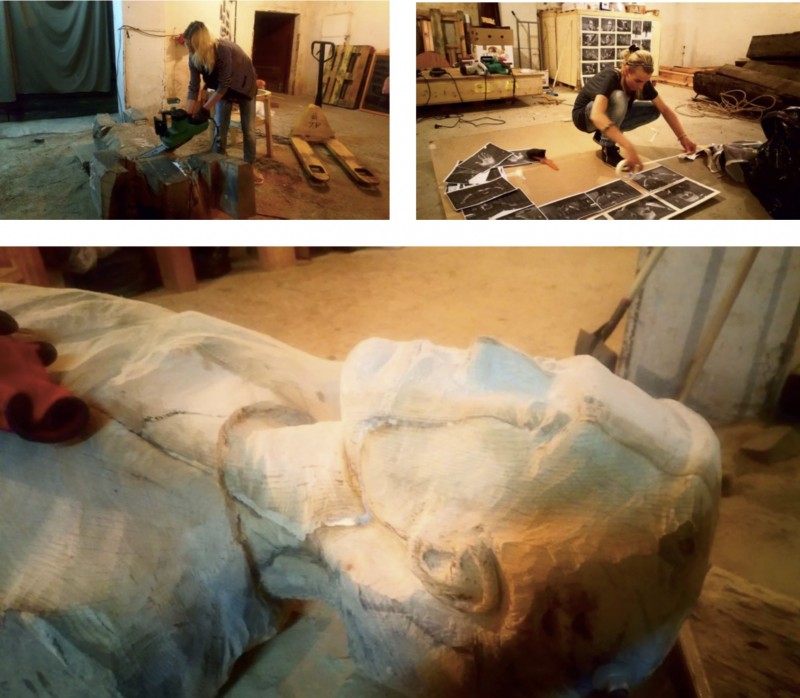
Above left photo / Ksenija Zapadenceva Sigmarsson sawing wood from Reykjavik Harbour for sculpture. Above right photo / Ksenija Zapadenceva Sigmarsson taping photos of Mr. Aron Einar Gunnarsson Icelandic football team member to a board for preperation of sculpture. Down below photo / Sculpture in working process of Mr. Ari Skúlason, Icelandic football team member. The sculptures are created in UAB / Studija Vilnius, the cooperation partner of the project.
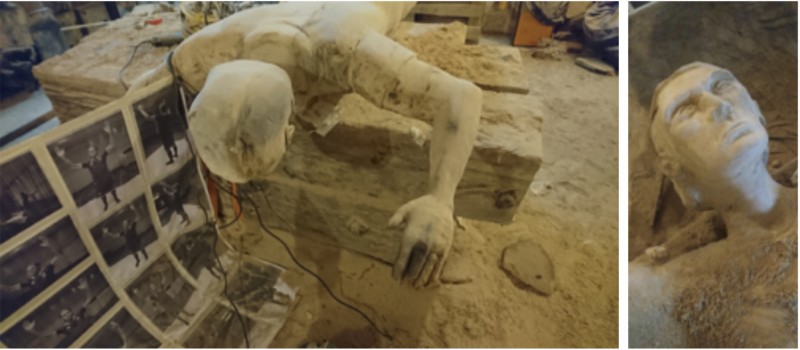
Left photo / Sculpture in working process of Mr. Ari Skúlasson, a national team member lies on his stomach while his hand is being carved out. Right photo / The same sculpture in the working process of his face being carved out and created. All the sculptures are created from over 100 years recycled wood from the Reykjavík Harbour. The harbour was the city and nation main business and livelihood for decades for its inhabitants.
Artists; Johann Sigmarsson and Ksenija Zapadenceva Sigmarsson
Name of Artwork; The Epic Vikings Slow Hand Clap
Karolina Fund ehf © 2025 | Kt: 460712-1570 | VAT: 111464 | Bjargargata 1, 102 Reykjavík, Iceland